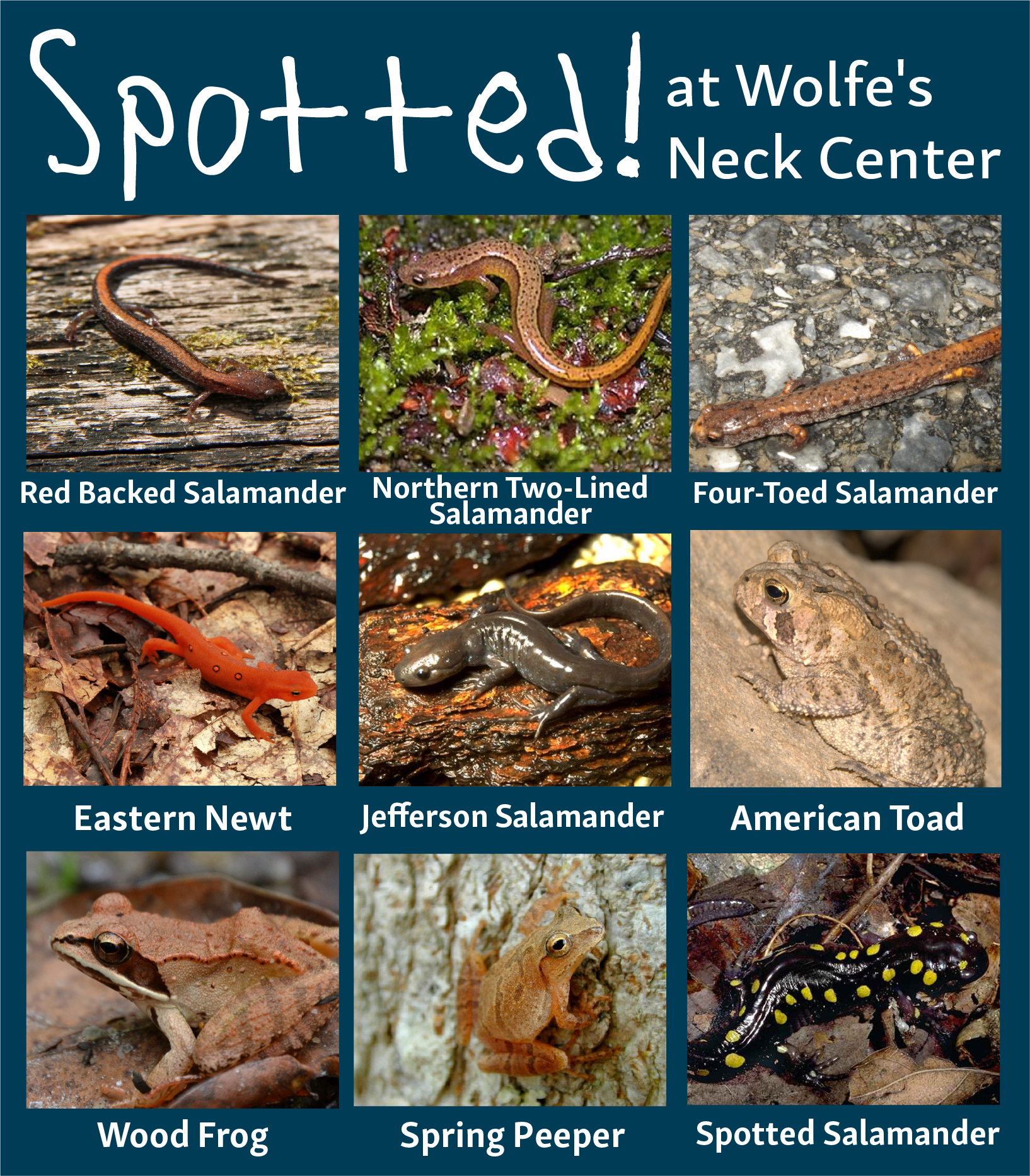Spotted! Amphibians Activity
One highlight of spring (aside from the warmer weather of course!) is something you may not have thought about…the return of amphibians. In late March and early April, we start to see and hear the first sign of these cold-blooded creatures digging out of their winter burrows for their annual migration.
Amphibians are different from their reptile cousins in a few different ways. While they both lay eggs, are cold blooded (or ectothermic), and have backbones (vertebrates), think of what a baby snake looks like. When a snake hatches, it’s just a tiny version of whatever type of snake laid the egg. Amphibians are vey different! Think, what does a baby frog look like? A tadpole! Amphibians need to lay their eggs in a water source, because their babies start off living only in water (aquatic) and breathing through gills, just like a fish. Once they grow, they will eventually crawl out of the water and live mostly on land (terrestrial).
This annual migration of amphibians is often called ‘The Big Night’. Once we get the first rainy evenings in the mid-40s to 50s, all of these amphibians head back to their birthplace, which is often a vernal pool (a seasonal body of water from snow melt and spring rains). These pools are where they will lay their eggs.
Because of this migration, this is a great time of year to head out to search for amphibians on your own. All you need is the ‘Spotted’ activity below, a warm coat, and maybe a small clear Tupperware container. Choose a wooded area that is near a small pond, stream or vernal pool (you can find these anywhere, even in suburban greater Portland). As you hike, carefully turn over logs, rocks, or other wooded debris and look underneath. Often this is where you will find amphibians hiding.
If you want to observe them closer, carefully scoot the amphibian into the Tupperware so you can get a great look. Make sure you rub your hands in some mud or the nearby dirt before you do! Amphibians have very thin skin that they use to breathe. If you touch them, they will breathe in whatever is on your skin: soap, perfume, insecticide, all of which are very bad for their health. When you are done, be sure to put it carefully back where you found it, and safely roll the log or rock back in place.
The most common salamanders you will find will be Eastern Red Backed, and you are also likely to bump into a wood frog or an American toad. Happy searching!

Part of our ![]() series
series